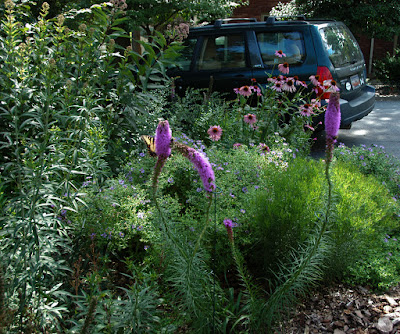Natural neighborhoods: re-knitting the fabric of life
And even more importantly, how do we create neighborhoods that help sustain life, both ours and the birds, bees, toads, butterflies, squirrels, insects, etc. that support the ecological underpinnings of life on our planet.
 |
| a pollinator-friendly pocket meadow |
How do we encourage more folks to become part of the process of re-knitting our urban and suburban landscapes with strong threads of native plants, pollinator and wildlife-friendly corridors made up of our personal home gardens? How do we encourage similar plantings in public and commercial landscapes?
I'm not really sure.
I've been involved with teaching about these things for my entire career, and I'm still not always sure about what works the best, aside from inspiring through story and example, encouragement, and sharing ideas and suggestions.
My basic level ideas simply start by encouraging folks to grow things, preferably native or edible, and learn more about them.
Lisa, this is the key question in gardening today. (IMO) How do we get people to understand how sterile their yards are and why that is so very bad. I've decided that I had to be an example. So I am tearing out grass and putting in perennials and all sorts of natives. My neighbors have been very keen on watching the progress. I hope to put in a much larger area this fall. I think we just have to meet people at their current level and gently coax them along. My patch of flowering perennials, the only one in the neighborhood, is one of the best enticements that I have up my sleeve right now! ~Julie
ReplyDeleteJulie, you're so right that this is a key issue in gardening today.
ReplyDeleteLeading by example is huge (I always think about Garden Walk in Buffalo around encouraging people to plant!)
They have over 350 gardens now participating in Garden Walk. Now, these are "conventional" gardens, to be sure, but hey, it's better than sterile lawns or Asian shrubs that just sit there.
I'm thinking about median, corner, and container plantings filled with (native) pollinator-friendly plants at the moment.
We'll see.
Yay for setting an example!